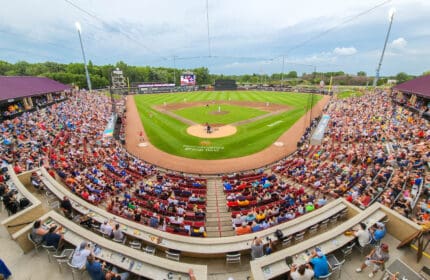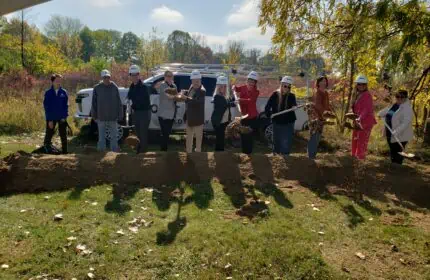Media
A New San Francisco, CA Hospital Is Using Goo to Prepare for Earthquakes
Release Date: 09/04/2015 | The Atlantic City Lab
With the threat of the “Big One” always looming over the West Coast, at least one building in California will be extra prepared. Embedded throughout the skeleton of San Francisco’s newest hospital are several 7-foot-wide wall panels filled with the city’s latest shield against earthquakes: goo.
It has the consistency of chewing gum, the San Francisco Chronicle reports, and could keep the 15-story California Pacific Medical Center standing and fully operational during an event as big as the 1906 earthquake, which registered a magnitude of 7.8. The hospital, located about 7 miles from the San Andreas fault line, is the first building in the U.S. to use such technology.
The goo is a thick synthetic rubber called polyisobutylene, heated to 150 degrees Fahrenheit and then pumped into panels with steel dividers inside. The panels are then being installed throughout the hospital’s 13 floors to absorb shock and minimize the violent back-and-forth swaying of the building during an earthquake. Once construction of the 274-bed hospital is complete, the walls will absorb 80 to 90 percent of an earthquake’s energy, says Jay Love at Degenkolb Engineers, the structural engineering firm behind the project.
The new hospital was designed to withstand quakes as strong as the 1906 one in San Francisco, pictured here, which registered a 7.8 magnitude. (Wikimedia Commons)
The idea is to increase the “damping” of a structure. Imagine, he says, pulling a spring by a weight attached to its bottom. It’ll keep swaying back and forth until the air’s resistance eventually slows it down. Now imagine doing the same thing in water or oil, both of which create more resistance. “[The spring] won’t go as far, and it’ll come to rest faster.”
The technology itself isn’t new at all. Earthquake-prone Japan, where buildings can be up to 30, 40, even 60 stories high, has actually been using these viscous wall dampers for more than 20 years. But it’s a novel idea in the U.S., says Love, in large part because of how challenging it is to introduce new technology into existing building codes.
When the firm first introduced their plan to the California agency in charge of hospital designs, it was met with mixed reactions. “Everything from, ‘we’ll never allow you to do it,’ to, ‘of course we’ll allow you to do it, we’re just going to make you prove that it works,” Love says with a laugh. “People are often content with using the tried and true, code-prescribed systems.”
The designers ended up putting prototypes of the viscous wall dampers through a battery of tests at a seismic-testing facility at University of California, San Diego. This was six years before construction of the hospital began.
But this sort of technology makes sense for a hospital, he adds. California code requires hospitals to be standing and functional after a major earthquake. Many are typically only four to six stories high and spread out, requiring a lot of land—land that isn’t available in downtown San Francisco. “So we have to build up and as buildings get taller, they move side to side more [during an earthquake],” Love says. One alternative would be to use traditional diagonal braces, but that would get in the way of installing windows in hospital rooms. An added advantage of the goo is that it reduces the amount of steel needed for large columns and beams to create the same amount of resistance.
But this is only the beginning. Love says designers still have to improve on the time it takes to analyze and test the dampers’ efficiency so that projects in the U.S. can start implementing the technology quickly. “We’re the first ones,” he says, “so it takes extra effort, extra time and extra testing.”


